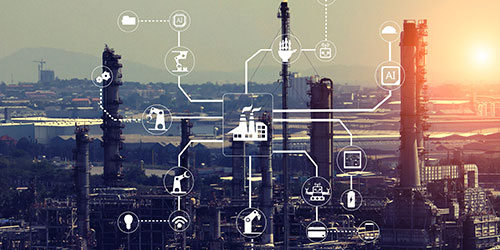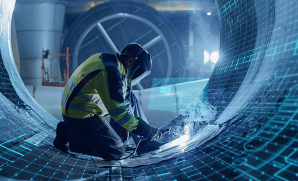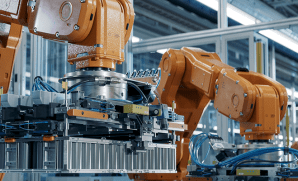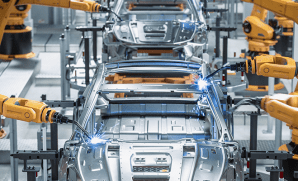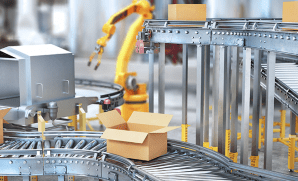Unlocking Industry 4.0 benefits: What Smart Factories of the Future Look Like
Publish Date: June 6, 2022The ideas surrounding Industry 4.0 and the idea of smart factories are not really new, but they have become more concrete with the digitisation of various industries. For decades, manufacturing has been thinking about ways to automate processes and increase efficiency through the use of information and communication technologies.
The Industrial Internet of Things (IIoT) is the next technological revolution in the manufacturing industry, an innovative concept that reshapes traditional industrial activity. The smart factory of tomorrow looks quite different. It is an integral part of Industry 4.0, a step forward on the path to Industry 5.0.
Bundling and industrial applications are essential requirements in the Internet of Things. Bridging these two aspects together is where things get really exciting. With IIoT, integration and operations can become streamlined, leading to faster, more accurate decision-making processes with the aid of Big Data analysis.
In today’s economy, where digital transformation is not only a top priority but also a prerequisite to business success, one needs to be ready to take advantage of this fully connected ecosystem. Many economies in the world have embarked on their vision of digital empowerment unlocking the full potential of Industry 4.0.
As we look forward to the future of the manufacturing industry, it’s worth considering what Smart Factories can do; how they will empower their organizations and transform their operations.
How Smart Factories take Manufacturing Operations to the Next Level: Connected, Centralized and Actionable Insights
A Smart Factory is an IIoT concept that envisions a manufacturing environment as a fully automated and intelligent network of systems that allows facilities, machines, and logistics chains to be managed without human intervention.
The term “smart factory” refers to various modern tools and techniques to achieve super-flexible, self-adaptable manufacturing capabilities. Smart factories offer the opportunity to create new forms of competence and agility by connecting disparate processes, multiple data streams, and disparate stakeholders (frontline managers, workers, and planners). The combined manufacturing processes, once integrated, would provide a variety of paybacks for operators, as well as operations that could be malleable and enthusiastically optimized.
The four-level model of smart factory systems

This is the four-level design’s fundamental platform for structuring the basic theoretical model of a smart factory. To accomplish this, more efficient data collection, analysis, and dissemination of information will be implemented.
At the first level, it is important to ensure that primary data is available for the refurbishment of the digital factory. Going further, a central repository of updated data will be deployed at the second level, which reduces the time-consuming processes of inter-departmental communications. As a response, manufacturing schedules would be optimized, synchronized, and executed flawlessly in real-time. The third level is activation, similar to the pursuit of automation in various pre-existing manual jobs.
With digital equipment and robotics advancement, activation would entail further digitalizing middle-level decision-making processes, reducing time and error sensitivity. At this level, the data will be analyzed using machine learning (ML) and artificial intelligence (AI), allowing for insight development without the need for human supervision. Overall, the system will be more automated than computerized data analysis, allowing it to predict key issues or irregularities ahead of time and prevent costly failures.
The fourth level builds on the lively nature of third-level activities to develop action-based solutions to problems and, in some cases, act to alleviate or improve a process without extensive human intervention. At this level of action orientation, data will be collected and examined for problem areas ahead of time, even before solutions are generated, and the human agency will be minimized where possible. As a result, a four-level smart factory installation model is intended to prevent both human error and elements such as corruption, strikes, and sabotage.
What the future beholds
The fourth industrial revolution is poised to bring more mechanization and automation that incorporates Big Data, Cloud Computing, the Internet of Things, and other technologies all in one place, resulting in the post-modern factory space.
To summarise, cyber-physical systems would allow us to build industrial systems capable of communicating and then networking the systems, expanding existing manufacturing capabilities. They would open new possibilities in structural public health systems, GPS tracking, remote diagnosis (telemedicine), remote services and control, and system health and security monitoring.
Digitalization of manufacturing and production processes would be critical in establishing smart factories. It would entail the most effective use of Big Data analysis, the safekeeping of information, and reducing human agency. In this way, preventing human error and ensuring the accuracy of the computer systems that support factory operations would save time and money in the long run. Courtesy of the rapid pace of disruption in the upcoming Industry 4.0 installations, it is critical for businesses to maintain holistic, integrated strategies and pursue long-term growth opportunities.
YASH Differentiators
YASH can help you jumpstart and sustain your Industry 4.0 journey in smart factories of the future. Why choose YASH? We provide comprehensive solutions for Industry 4.0 that encompass everything from new process design, to technology integration and end-to-end management. The biggest challenge for manufacturers today is getting their smart factories up and running effectively with sustainable benefits. With YASH you have the right partner to help build a reliable Digital Gateway that connects with the most forward-thinking technology partners like SAP, AA and AWS to transform your business landscape into an intelligent factory of tomorrow!




